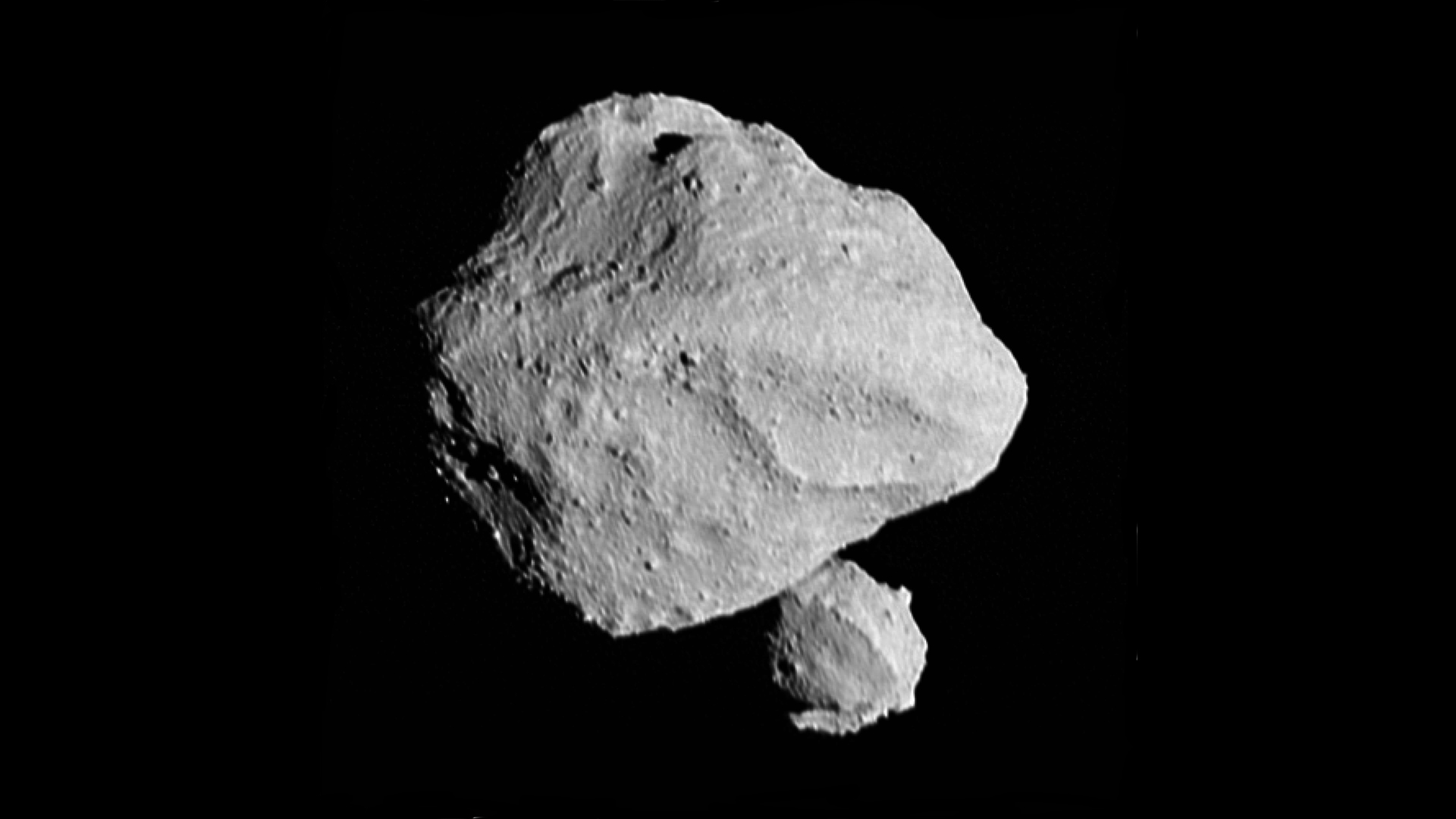NASA flyby of "Dinky" asteroid reveals hidden moon
NASA's Lucy spacecraft has found a hidden asteroid "moon" swirling around the larger main belt asteroid Dinkinesh, affectionately known as Dinky.

An asteroid affectionately known as "Dinky" has been tumbling through space with an even dinkier companion hidden behind it, surprising new images from NASA's Lucy spacecraft reveal.
Zooming past the asteroid at 10,000 mph (16,000 km/h) on Nov. 1, Lucy made its closest-ever observations of Dinkinesh ("Dinky"), an asteroid that Lucy has been tracking since the spacecraft's launch in 2021. Flying within roughly 270 miles (430 kilometers) of Dinkinesh, Lucy revealed that the space rock isn't just one asteroid, as initially thought, but a binary pair made of a larger, half-mile wide (790 meters) rock and a 0.15 mile wide (220 m) "moon" orbiting closely around it.
"We knew this was going to be the smallest main belt asteroid ever seen up close," Keith Noll, Lucy project scientist from NASA's Goddard Space Flight Center in Maryland, said in a statement. "The fact that it is two makes it even more exciting."
Dinkinesh and its newfound moon live in the main asteroid belt between the orbits of Mars and Jupiter, roughly 300 million miles (480 million km) from Earth. As Lucy approached the asteroid pair over the previous several weeks, astronomers observed Dinkinesh's brightness changing over time, offering the first clues that there could be a smaller object orbiting around it. The Nov. 1 flyby confirmed this.
This Dinky duo are merely the first asteroids that Lucy will study on a mission that will ultimately take the spacecraft all the way to Jupiter. In 2025, Lucy will make a close flyby of the main belt asteroid Donaldjohanson, before heading out of the asteroid belt and into Jupiter's orbit. The mission's main targets are a group of eight asteroids known as the Trojans, which share Jupiter's orbit around the sun but aren't particularly close to the gas giant.
Trojan asteroids are suspected to be made of the same ancient material that formed the outer solar system planets, Jupiter, Saturn, Uranus and Neptune. Studying them could reveal valuable clues about the formation of the solar system more than 4 billion years ago, according to NASA.
Get the world’s most fascinating discoveries delivered straight to your inbox.
Lucy is expected to reach its first Trojan asteroid targets in August and September 2027.

Brandon is the space / physics editor at Live Science. With more than 20 years of editorial experience, his writing has appeared in The Washington Post, Reader's Digest, CBS.com, the Richard Dawkins Foundation website and other outlets. He holds a bachelor's degree in creative writing from the University of Arizona, with minors in journalism and media arts. His interests include black holes, asteroids and comets, and the search for extraterrestrial life.


